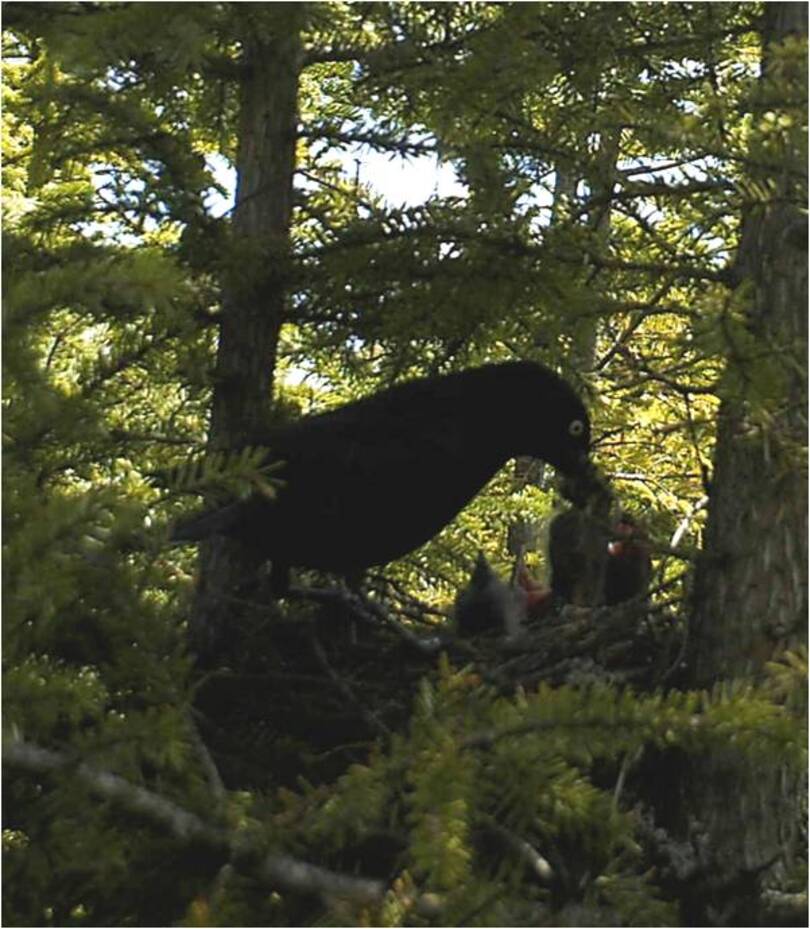SUNY-ESF researchers analyze declining rusty blackbird population

Courtesy of Shannon Buckley
SUNY-ESF researchers are analyzing the decline of the Rusty Blackbird population, which has been crashing since the 1970s.
Researchers at SUNY-ESF have been analyzing data to better understand the decline in the rusty blackbird population.
Stacy McNulty, an ecological researcher at the State University of New York College of Environmental Science and Forestry Newcomb Campus, has been working with a research team to learn more about rusty blackbirds.
Two citizen science programs — the North American Breeding Bird Survey and the Christmas Bird Count — conduct yearly counts of birds across America, McNulty said in an email.
As more surveys were conducted over the years, McNulty said it was discovered that fewer and fewer rusty blackbirds were being spotted on the survey routes, which eventually led researchers to realize that the bird numbers have been crashing since the 1970s.
This population decline was not recognized sooner perhaps because of the elusive tendencies of the birds, McNulty said.
Rusty blackbirds live predominately in hard-to-access northern wetlands, always near streams, ponds and complexes of wetlands often created by beavers that build dams on flowing water. They might also have been confused with similar-looking bird breeds such as the red-winged blackbirds or common grackles.
Since April, McNulty’s team has been going into the wetlands, finding adult birds and following them secretly back to their nests. A camera is set up near the nests to watch the birds and their habitats. The nests are checked weekly to determine whether eggs have been hatched or eaten and when the birds are finished nesting, habitat measurements are conducted.
Previously, timber harvesting was believed to be the primary reason for the population decline of the rusty blackbird, but as more research has been conducted, new possible culprits have been discovered.
McNulty said besides harvesting trees, other threats including mercury bioaccumulation, habitat change from loss of wintering grounds and climate change impacts have all affected the bird.
Additionally, many animals prey on the nests — the research team’s cameras have found red squirrels, hawks, foxes and marten. A deer was once spotted on camera eating out of a nest.
Although interest in the bird species has been growing lately, scientists have not determined exactly why the population is declining, McNulty said.
However, the elimination of this species could affect the wetland ecology of North America, McNulty said. The rusty blackbird is a top predator of aquatic insects, so a decline in population could affect the relative diversity of insects in the ecosystem.
She added that there are other, less quantifiable values such as the “species have a right to exist” argument as well as the effect the elimination of the birds could have on people that enjoy recreational birding.
McNulty said scientists are concerned that the species may stop breeding in the New York state region altogether and move further north into Canada, which the birds have already begun to do.
Three things that might help, McNulty said, are protecting breeding and wintering wetland quality and connectivity from fragmentation, addressing pollution and human disturbance and monitoring the population and addressing information gaps.
She added that there are public efforts, like the Rusty Blackbird Spring Migration Blitz, that aim to evaluate migratory timing “hot spots” for stopovers and to inform conservation efforts.




